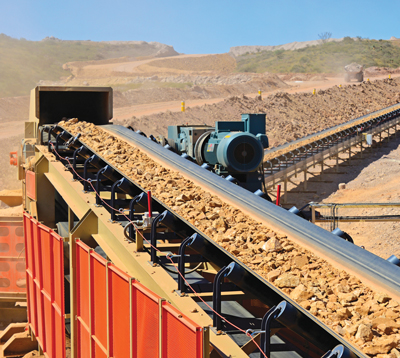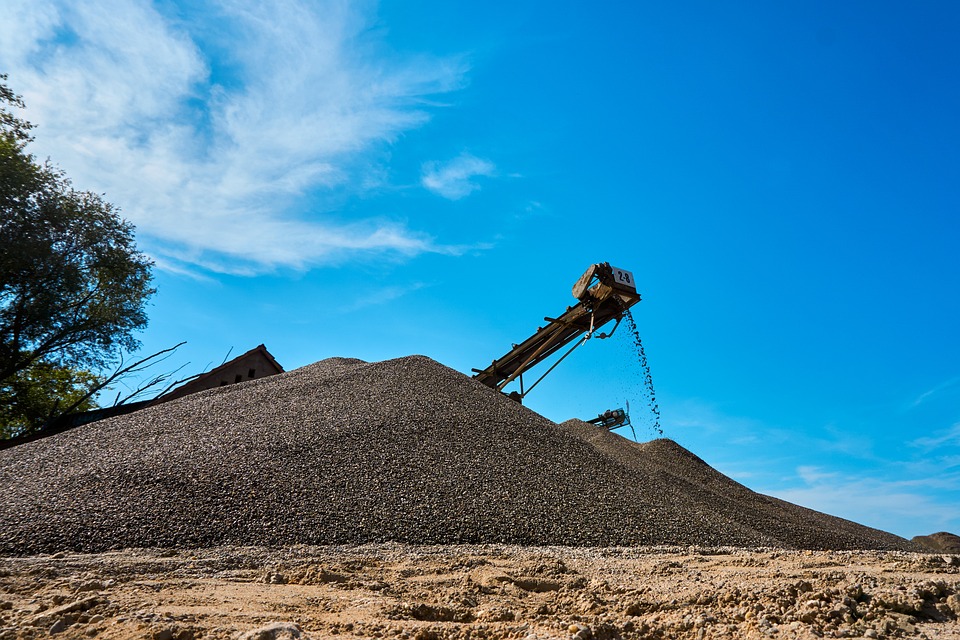
Daily Idler Maintenance Checklist: A Comprehensive Guide
Idlers are critical components of belt conveyor systems, widely used in industries such as mining, ports, power generation, and metallurgy for material handling. Regular daily maintenance is essential to ensure operational efficiency, prevent unexpected downtime, and extend equipment lifespan. This guide provides a detailed, actionable checklist for daily idler maintenance, designed for maintenance teams to maintain optimal conveyor performance.
Author Background
This article is authored by a mechanical engineering expert with over 12 years of experience in conveyor system design, maintenance, and optimization. The author has contributed to conveyor installations in large-scale mining and port projects and holds certifications in reliability engineering and industrial equipment maintenance. The content is informed by industry standards (e.g., CEMA and ISO 1537), field experience, and authoritative technical resources to ensure accuracy and reliability.

Daily Maintenance Tasks
The following is a detailed checklist of daily idler maintenance tasks, recommended for execution before each shift or daily operation to ensure conveyor reliability and efficiency.
1. Visual Inspection of Idlers
Purpose: Identify physical damage or abnormalities on idler surfaces and structures to ensure proper operation.
Task:
Inspect all idlers (troughing, return, impact, and training idlers) for signs of wear, cracks, deformation, or misalignment.
Check idler surfaces for grooves, pitting, scratches, or material buildup.
Ensure idlers are properly aligned with the conveyor belt, with no visible deviation.
Procedure:
During conveyor operation or shutdown, use a flashlight and inspection mirror to closely examine idler surfaces and mounting points.
Verify that idlers are securely fixed within their frames, with no signs of looseness or displacement.
Record any abnormalities, noting the idler’s number, location, and issue (e.g., “Troughing idler #23 shows severe surface wear”).
Tools:
Flashlight
Inspection mirror
Maintenance log or digital maintenance management system
Precautions:
Ensure safety by avoiding contact with moving conveyor belts.
Use safety ladders or platforms for high or hard-to-reach idlers.
Actions:
For minor wear, schedule ongoing monitoring; for severe damage, plan idler replacement.
If misalignment is detected, adjust idler positioning or check training idler functionality.
2. Check for Abnormal Noises
Purpose: Detect potential bearing issues, loose components, or material buildup through sound.
Task:
Listen for unusual sounds such as grinding, squeaking, rattling, or knocking during conveyor operation.
Identify the source of noises to determine if they stem from bearing wear, lubrication issues, or idler seizure.
Procedure:
Walk along the conveyor line at a safe distance, listening carefully for abnormal sounds from each idler.
Use a stethoscope or acoustic sensor (if available) to pinpoint the source of noises.
Tag and log noisy idlers, noting their number, location, and type of sound (e.g., “High-pitched squeaking”).
Tools:
Stethoscope or acoustic sensor
Marking tags
Maintenance log
Precautions:
Ensure ambient noise does not interfere with sound detection; perform checks during quieter periods if needed.
Noises may indicate early failure, so prioritize investigation.
Actions:
Check lubrication for noisy idlers and replenish with high-performance grease (e.g., Shell Gadus S3 V220C).
If noises persist, schedule disassembly to inspect bearings or replace the idler.
3. Inspect Belt Tracking
Purpose: Ensure proper idler alignment to prevent belt mistracking and associated damage or material spillage.
Task:
Observe the conveyor belt for signs of mistracking or uneven wear caused by idler issues.
Verify that training idlers are functioning correctly to automatically correct belt alignment.
Procedure:
During conveyor operation, monitor the belt’s path over idlers for signs of drift or vibration.
Use a laser alignment tool or straightedge to check idler perpendicularity with the belt.
Inspect training idlers for flexibility, ensuring they can rotate and adjust freely.
Tools:
Laser alignment tool
Straightedge or angle ruler
Maintenance log
Precautions:
Mistracking may result from seized idlers, frame deformation, or improper installation; investigate each cause.
Avoid direct contact with the moving belt and follow safety protocols.
Actions:
Adjust misaligned idlers to ensure perpendicularity with the belt.
Replace seized or damaged training idlers and verify proper belt tension if needed.
4. Check for Material Buildup
Purpose: Prevent material accumulation on idler surfaces to reduce rotational resistance and belt mistracking risks.
Task:
Inspect idler surfaces for adhered material, particularly for sticky or wet materials like coal or clay.
Confirm that belt cleaners are effectively removing material residue from the belt.
Procedure:
Shut down the conveyor and follow lockout-tagout (LOTO) procedures, then inspect idler surfaces for buildup.
Use a scraper or high-pressure water jet to clean adhered material, taking care not to damage idler surfaces.
Check belt cleaners (e.g., polyurethane scrapers or rotary brushes) for wear and proper contact pressure.
Tools:
Scraper
High-pressure water jet
Measuring tape (for cleaner adjustments)
Precautions:
Avoid using sharp tools that could damage idler coatings during cleaning.
For sticky materials, prioritize self-cleaning idlers (e.g., spiral idlers).
Actions:
Clean idler surfaces to restore smoothness.
Adjust or replace worn belt cleaners to ensure effective contact with the belt.
5. Examine Idler Frames and Mountings
Purpose: Ensure the structural integrity of idler frames and mountings to prevent loosening or detachment.
Task:
Inspect idler frames, brackets, and bolts for corrosion, looseness, or cracks.
Confirm that frames are not deformed due to vibration or load stress.
Procedure:
Visually inspect all idler frames and brackets for signs of corrosion, rust, or cracks.
Use a torque wrench to check bolt tightness, ensuring they meet manufacturer-specified torque values (e.g., for Grade 8.8 bolts).
Record any loose or damaged mountings and tag frames requiring repair.
Tools:
Torque wrench
Corrosion inspection tools (e.g., ultrasonic tester)
Anti-corrosion coating equipment
Precautions:
Regularly inspect frames in coastal or high-humidity environments to prevent accelerated corrosion.
Use lock nuts or thread-locking compounds to reduce vibration-induced loosening.
Actions:
Tighten loose bolts and replace damaged bolts or frames as needed.
Apply epoxy coatings or switch to stainless steel frames for corrosion-prone environments.
6. Monitor Bearing Temperature
Purpose: Detect overheating to prevent bearing failure due to insufficient lubrication or wear.
Task:
Measure idler bearing temperatures to ensure they remain within normal ranges.
Identify overheating caused by lubrication issues, seal failure, or overloading.
Procedure:
Use an infrared thermometer to measure bearing temperatures, recording readings for each idler.
Compare temperatures to the normal range (typically below 60°C/140°F) and flag any outliers.
For lubricatable idlers, check grease condition and replenish if needed.
Tools:
Infrared thermometer
Grease gun (for lubricatable idlers)
Temperature log
Precautions:
Ensure the thermometer is calibrated for accurate readings.
Overheating may signal imminent bearing failure, requiring immediate action.
Actions:
Replenish overheating idlers with high-performance grease (e.g., high-temperature synthetic grease).
If temperatures remain high, schedule disassembly to inspect or replace bearings or idlers.
7. Verify Belt Cleaner Performance
Purpose: Ensure belt cleaners effectively remove material to prevent buildup on idlers.
Task:
Inspect belt cleaners (e.g., polyurethane scrapers, rotary brushes) for wear and contact effectiveness.
Confirm cleaner adjustment angles and pressure are appropriate.
Procedure:
Check cleaner contact points with the belt for excessive wear or gaps.
Use a measuring tape to verify cleaner contact pressure, adjusting to manufacturer specifications.
Run the conveyor and observe whether cleaners effectively remove material residue.
Tools:
Measuring tape
Adjustment wrench
Cleaner maintenance manual
Precautions:
Replace severely worn cleaners promptly to maintain cleaning efficiency.
Avoid over-tightening cleaners, which can cause excessive belt or cleaner wear.
Actions:
Adjust cleaner angles and pressure for optimal belt contact.
Replace worn cleaners with models suited to the material type (e.g., polyurethane scrapers).

Additional Notes
Frequency: Perform full checks daily or before each shift, with quick visual inspections during operation as needed.
Record Keeping: Use a maintenance log or digital system (e.g., CMMS) to document findings, actions, and replacement schedules. Example log entry:
Date: July 10, 2025
Idler Number: #45 (Troughing Idler)
Issue: Minor material buildup, bearing temperature 55°C
Action: Cleaned surface, added grease
Safety Requirements:
Follow lockout-tagout (LOTO) procedures before maintenance to ensure the conveyor is stopped.
Wear appropriate personal protective equipment (PPE), such as gloves, safety glasses, and hard hats.
Use safety harnesses and platforms for high-elevation work.
Training Recommendations:
Provide regular training on idler inspection, lubrication, alignment, and fault diagnosis.
Ensure staff are familiar with CEMA and ISO 1537 maintenance guidelines.
Environmental Considerations:
In high-humidity or corrosive environments, prioritize checks on sealing performance and frame corrosion.
For highly abrasive materials, increase inspection frequency for idler surfaces and cleaners.
Case Study
In a large-scale coal mine conveyor system, inadequate daily maintenance led to material buildup and bearing overheating, causing frequent downtime costing approximately $100,000 annually. The maintenance team implemented this daily checklist, focusing on material buildup and bearing temperature monitoring, and introduced polyurethane cleaners and labyrinth-sealed idlers. Within three months, idler failure rates dropped by 70%, annual downtime decreased by 120 hours, and maintenance costs were reduced by $60,000.
References
Belt Conveyors for Bulk Materials, 7th Edition, Conveyor Equipment Manufacturers Association (CEMA), 2014.
ISO 1537: Rollers for Belt Conveyors – Technical Requirements.
Conveyor System Design and Maintenance, Industrial Press, 2020.
Case studies from the International Material Handling Association, 2023.
Conclusion
This detailed daily idler maintenance checklist provides a systematic guide for maintenance teams to prevent common issues like bearing failures, belt mistracking, and material buildup, ensuring reliable conveyor operation. By consistently following these tasks, maintaining thorough records, and providing proper training, your conveyor system will achieve higher reliability and lower maintenance costs. For complex or recurring issues, consult certified conveyor specialists or idler manufacturers for tailored solutions.
 Gold Mining Belt Conveyors: Design, Selection, Engineering Calculations & 2025 Technology Guide
Gold Mining Belt Conveyors: Design, Selection, Engineering Calculations & 2025 Technology Guide
 The Ultimate Guide to Material Handling Belt Conveyors in Mining, Aggregates, Quarries & Cement Plants
The Ultimate Guide to Material Handling Belt Conveyors in Mining, Aggregates, Quarries & Cement Plants
 Tubular Belt Conveyor: Revolutionizing Bulk Material Handling
Tubular Belt Conveyor: Revolutionizing Bulk Material Handling
 Understanding the Cost of Conveyor Belts: A Comprehensive Guide for Businesses
Understanding the Cost of Conveyor Belts: A Comprehensive Guide for Businesses
 How to Choose the Best Mining Conveyor Idlers for Your Operation
How to Choose the Best Mining Conveyor Idlers for Your Operation
 Daily Idler Maintenance Checklist: A Comprehensive Guide
Daily Idler Maintenance Checklist: A Comprehensive Guide
 How to Choose the Right Belt Conveyor Company: A 2025 Buyer’s Guide
How to Choose the Right Belt Conveyor Company: A 2025 Buyer’s Guide
 Conveyor Idlers Installation Guide: From Beginner to Expert
Conveyor Idlers Installation Guide: From Beginner to Expert


